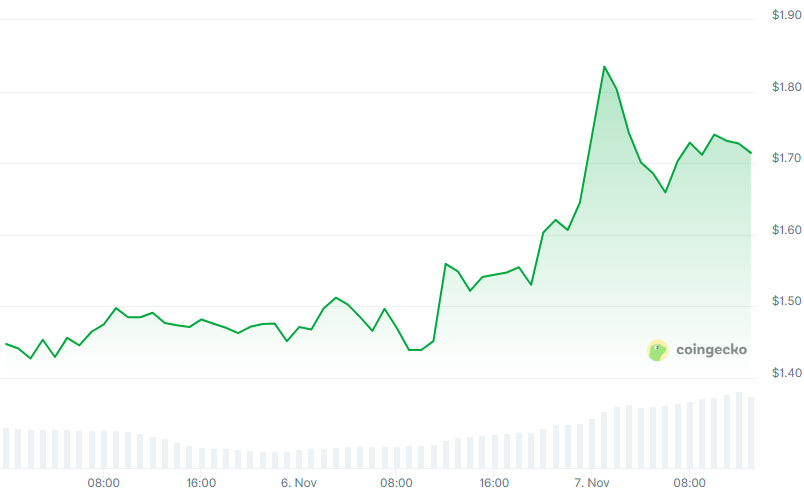LayerZero bought $10 million worth of its ZRO token on the open market, calling the asset undervalued and signaling more purchases ahead. The move pushed ZRO up about 11% to $1.73, with a market value near $194 million, according to CoinGecko.
What LayerZero did—and why now
In a post on X, LayerZero described ZRO as "one of the most mispriced assets in the world" and said it will keep buying when it sees openings. The team framed the effort inside a bigger shift in finance, saying it aims to sit at the center of a move toward global, permissionless infrastructure.
Key numbers at a glance
- Buyback size: $10 million in ZRO from the open market
- Price action: +11% in 24 hours to $1.73 (CoinGecko)
- Market cap: ~$194 million (CoinGecko)

Why it matters
Token buybacks are becoming a go-to tool in crypto. In simple terms, a buyback is when a project uses cash or treasury assets to purchase its own token. Taking tokens off the market can tighten supply, support price, and signal confidence—similar to stock buybacks in traditional markets.
The trade-off: buybacks return value to holders today, but they can also mean fewer funds for hiring, product upgrades, or marketing. Investors are watching which approach—payouts vs. reinvestment—drives better long-term results.
Buybacks are surging across crypto
A recent report from investment firm Keyrock found buybacks and direct token distributions have grown more than fivefold since 2024. Looking at 12 major crypto projects, the study said an average of 64% of total revenue was sent back to tokenholders, marking a shift away from spending everything on development, marketing, and community programs.
LayerZero's move fits that pattern. It's a clear sign that projects with real revenue are increasingly comfortable sharing it with tokenholders rather than keeping it all for growth.
Pivots and price history
This isn't LayerZero's first buyback. In September, the LayerZero Foundation said it repurchased 50 million ZRO—about 5% of the total supply—from early backers. After that announcement, ZRO climbed from roughly $1.82 to more than $2.21 by Sept. 24.
The new $10 million purchase suggests management still believes supply reduction and signaling are effective levers in a choppy market.
Where LayerZero is building next
LayerZero is an "omnichain" protocol—software that lets different blockchains talk to each other. The team has laid out plans to widen its network through 2025.
- Stellar integration: Announced in September. Stellar has about $148.92 million in total value locked (TVL).
- Mantle integration: Earlier this year, LayerZero connected to Mantle, an Ethereum Layer-2 with about $7 billion in on-chain assets. It used LayerZero's Omnichain Fungible Token (OFT) standard to move MNT to HyperEVM, making assets easier to transfer between chains.
What this means for holders
- Potential price support: Ongoing buybacks can reduce circulating supply and may steady the token in weak markets.
- Stronger signal: Management is putting capital behind its conviction that ZRO is undervalued.
- Execution risk: If revenue slows or integrations underdeliver, sustained buybacks could be harder to fund.
What to watch next
- Follow-through on buybacks: Does LayerZero keep purchasing if prices rise?
- Network traction: Adoption of Stellar and Mantle integrations, and how often users move assets with OFT.
- Industry trend: Whether more projects lift their payout ratios after Keyrock's 5x surge in buybacks and distributions since 2024.
Bottom line: LayerZero's $10 million ZRO purchase adds fuel to a growing crypto trend—returning revenue to tokenholders—while doubling down on a bet that cross-chain infrastructure will be a core pillar of the next market cycle.
